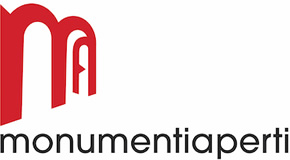Planned in a vast area between the Tanca Pias and the Bingia Matta, then far from the built-up area, the new cemetery had the task of integrating the monumental one of Bonaria, of nineteenth-century layout, now completely surrounded by urban expansion. An initial plan drawn up in 1933 by Cesare Valle, an architect of Sardinian origin, was followed by one the following year, which was then carried out not entirely faithfully. In the first case, two parallel porticos interrupted by exedras with 25 m radius were planned for “1st class private monuments” according to a hierarchical principle that allowed 3rd class manholes only support to the outer wall. Also in parallel but more outward were areas for a double row of private chapels.
In the version then adopted, the burial niches are arranged in buildings that are developed on two sides in axis with the entrance with an increasing level jump as it approaches toward the church. The exterior elevations are of trachyte stone from Serrenti with the plinth and pillars covered with travertine. The monumental and austere appearance emphasizes the square but well-articulated volumes of the complex, which included a nursery and the non-Catholic cemetery.
The cemetery quickly filled with the burials of the victims of the 1943 bombings and the war dead, divided by nationality, for whom the shrine was erected, again in trachyte stone, resembling a Nuragic construction. To the left of the entrance, on the site of the mass graves associated with that tragic event, stands the Tree of Life, commissioned by the Rotary and Lions clubs: it is an iron sculpture (Torre Pintus, 1984) in front of which a funeral rite is held every year on November 2 to commemorate the civilian dead.








